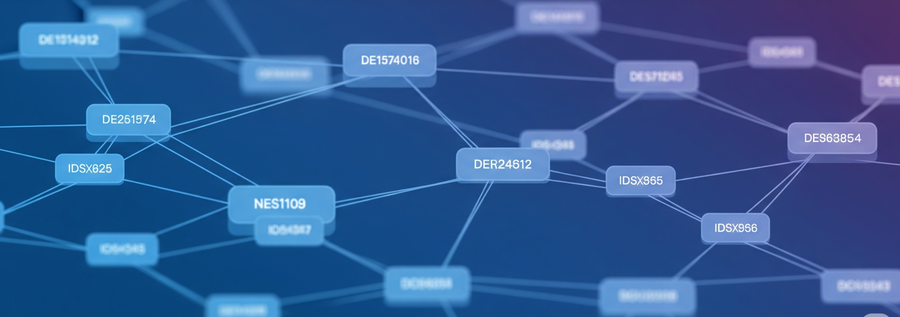What the Base? Decoding Webex API IDs
June 18, 2025

Hey there, Webex developers! Ever found yourself staring at a Webex API ID, thinking, "What in the byte-sized world is that?" You're not alone! Those seemingly random strings of characters that uniquely identify everything from users to rooms to messages might look a little mysterious at first glance. But fear not, because today we're going to pull back the curtain and reveal the not-so-secret sauce behind these special IDs.
Get ready to answer “What the base?” (64, that is!) and decode the magic! ✨
The Mystery of the Webex API ID
You've seen them. They look something like Y2lzY29zcGFyazovL3VzL1BFT1BMRS8wNjc2YWI1Mi1mNzYxLTQwMTUtYTAxZC01YjYyZDYwYzgxMTM= or Y2lzY29zcGFyazovL3VzL1JPT00vZmI2NDUzYzAtNzQ3MS0xMWU4LTkxNzktNzU0YTEwZDc0YzU0. Long, a bit jumbled, and definitely not UUIDs.
But there's a brilliant reason for this apparent complexity!
The "Why": Taming Special Characters
Here's the lowdown: Webex IDs, internally, can contain all sorts of characters – including those that would make a URL parser throw a tantrum. Think colons, slashes, and other bits that need special handling when you're sending them as part of a URL. Normally, you'd have to URL encode these characters, which can make your URLs look even more like a secret alien language and frankly, be a bit of a headache to manage.
But Webex, in its infinite wisdom, had a better idea!
To save you the hassle of endless URL encoding and decoding, Webex API IDs are Base64 encoded. This means that the original, potentially "messy" internal ID is transformed into a clean, URL-safe string that can be passed around without any extra fuss. It's like giving your ID a superhero costume that makes it invisible to URL-encoding villains!
For the more visual learners and a deeper dive into Base64 encoding, I suggest checking out Lucid's Base64 Encoding: A Visual Explanation blog.
Show Me the Magic!
Let's get our hands dirty and see this in action. We'll take a common Webex API ID and reverse-engineer it.
Imagine you have a Webex user ID like this from an API response:
Y2lzY29zcGFyazovL3VzL1BFT1BMRS8wNjc2YWI1Mi1mNzYxLTQwMTUtYTAxZC01YjYyZDYwYzgxMTM=
This is the Base64 encoded version. To see what's truly inside, we need to decode it.
Most programming languages have built-in Base64 decoding functions. Let's look at a few examples:
Python
import base64
encoded_id = "Y2lzY29zcGFyazovL3VzL1BFT1BMRS8wNjc2YWI1Mi1mNzYxLTQwMTUtYTAxZC01YjYyZDYwYzgxMTM="
decoded_bytes = base64.b64decode(encoded_id)
decoded_string = decoded_bytes.decode('utf-8')
print(decoded_string)
JavaScript (in Your Browser's Console or Node.js)
const encodedId = "Y2lzY29zcGFyazovL3VzL1BFT1BMRS8wNjc2YWI1Mi1mNzYxLTQwMTUtYTAxZC01YjYyZDYwYzgxMTM=";
const decodedString = atob(encodedId); // `atob` is for Base64 decoding in browsers
console.log(decodedString);
The Grand Reveal!
No matter which language you use, the decoded string will be:
ciscospark://us/PEOPLE/0676ab52-f761-4015-a01d-5b62d60c8113
Aha! Now that looks much more familiar. You can clearly see the ciscospark://us/PEOPLE/ prefix followed by the actual UUID for the user.
Similarly, for a room ID like Y2lzY29zcGFazovL3VzL1JPT00vZmI2NDUzYzAtNzQ3MS0xMWU4LTkxNzktNzU0YTEwZDc0YzU0, decoding it would reveal:
ciscospark://us/ROOM/fb6453c0-7471-11e8-9179-754a10d74c54
See? The decoded string often contains internal identifiers (like UUIDs) and a type prefix (PEOPLE, ROOM, MESSAGE, etc.) that Webex uses internally to identify the resource.
When Do You Need to Decode?
For most of your Webex API interactions, you won't actually need to decode these IDs. When you receive them in API responses, you can typically use them directly in subsequent API requests. The Base64 encoding is handled transparently by the API.
However, understanding this encoding is super useful for:
- Debugging: When you're trying to figure out what a specific ID refers to, decoding it can give you immediate clarity.
- Logging: If you're logging IDs, decoding them can make your logs much more human-readable.
- Curiosity! Because hey, we're developers, and we love knowing how things work under the hood!
Now You Know!
So there you have it! Those "mysterious" Webex API IDs are simply well-dressed, Base64-encoded versions of their internal selves. This clever trick saves you from the headaches of URL encoding and allows for smoother, more predictable API interactions.
Now go forth, build amazing things, and confidently drop the base knowing you're working with some truly smart IDs! Happy coding!